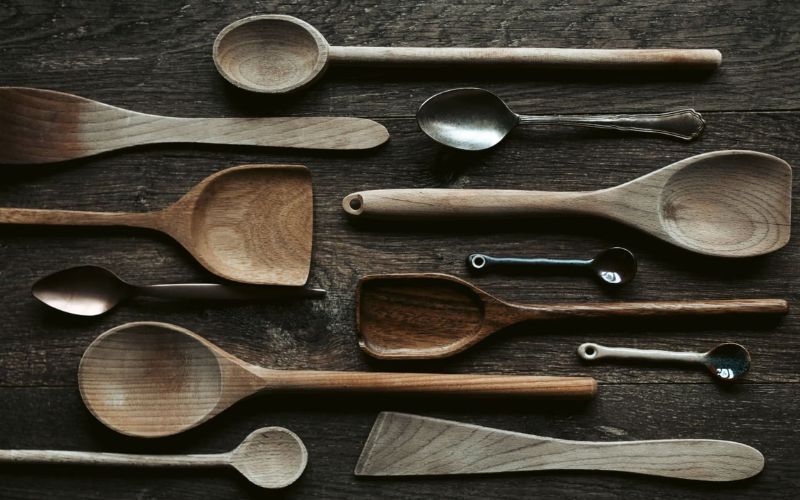Washing a spoon might seem like a simple task, but if not done correctly, it can lead to an annoying splash of water that not only wets your clothes but also makes a mess around the sink area. Learning how to wash a spoon without splashing requires some basic understanding of water dynamics, proper techniques, and a bit of practice. This guide will walk you through the process step-by-step, ensuring you can clean your spoons effectively and efficiently without any unwanted splashes.
Understanding the Basics
Before diving into the techniques, it’s important to understand why splashing occurs in the first place. When water hits a spoon, especially one with concave surfaces, it tends to spread out and can easily splash if the water pressure is too high or the angle of contact is incorrect.
Tools and Materials You’ll Need
- A sink with a faucet
- Mild dish soap
- A sponge or dishcloth
- Warm water
- A drying rack or clean towel
Step-by-Step Guide to Washing a Spoon Without Splashing
1. Preparation
Start by preparing your workspace. Ensure that your sink is clean and free from any debris that could cause additional splashes. Gather all the spoons you need to wash and set them aside.
2. Adjust Water Temperature and Pressure
Turn on the faucet and adjust the water to a lukewarm temperature. Cold water can make grease harder to remove, while hot water can sometimes be too intense and increase the likelihood of splashing. Lukewarm water is gentle on your hands and effective in cleaning. Adjust the water pressure to a low to moderate flow. A high-pressure stream is one of the main culprits of splashing.
3. Position the Spoon Correctly
Hold the spoon firmly by the handle and angle it slightly downward. The concave side (the part that holds food) should be facing down towards the sink basin. This position allows the water to run off the spoon smoothly without causing splashes.
4. Apply Dish Soap
Apply a small amount of dish soap to a sponge or dishcloth. You don’t need much; a little goes a long way. Rub the sponge or cloth to create some lather.
5. Clean the Spoon
With the spoon still angled downward, gently rub the soapy sponge or cloth over both sides of the spoon. Start from the handle and work your way towards the bowl of the spoon. Use circular motions to ensure you’re cleaning all surfaces. Pay special attention to any food particles or grease.
6. Rinse Carefully
Rinsing is the critical step where most splashing occurs. To avoid this, keep the spoon angled downward. Slowly bring the spoon under the running water, starting from the handle and moving towards the bowl. The water should flow from the handle to the tip, naturally carrying the soap away without causing splashes.
7. Dry the Spoon
Once rinsed, shake off any excess water over the sink. Use a clean towel to dry the spoon or place it in a drying rack. Ensure it’s completely dry before putting it away to prevent water spots or bacterial growth.
Additional Tips and Tricks
Use a Low-Flow Faucet
If your faucet has an aerator, it can help reduce water pressure, thereby minimizing splashes. Consider installing a low-flow faucet to make the process even easier.
Use a Gentle Dish Soap
Some dish soaps are highly concentrated and produce a lot of suds. Opt for a gentle dish soap that produces fewer bubbles. This can make rinsing easier and less splashy.
Utilize a Two-Basin Sink
If you have a two-basin sink, fill one side with soapy water and the other with clean water for rinsing. This method allows you to control the rinsing process better and reduces splashing.
Consider a Dishpan
A dishpan can be a useful tool to wash utensils, including spoons. Fill the dishpan with soapy water and wash the spoon inside it. Rinse the spoon under a gentle stream of water outside the dishpan to prevent splashing.
Keep the Spoon Close to the Sink Basin
When rinsing, keep the spoon as close to the sink basin as possible without touching it. This proximity minimizes the distance water travels, reducing the chance of splashes.
Be Mindful of the Spoon’s Shape
Spoons come in various shapes and sizes. Larger spoons or those with deeper bowls are more prone to splashing. Adjust your technique accordingly, perhaps rinsing larger spoons at an even lower water pressure or angling them more steeply.
The Science Behind Splashing
Understanding the science behind splashing can further enhance your technique. When water impacts a surface, it displaces and creates ripples. If the surface is not flat (like a spoon), these ripples can turn into splashes. By controlling the angle and flow of water, you can reduce the energy of these ripples and prevent splashing.
Surface Tension
Surface tension is a property of water that causes it to form droplets and splash when hitting a surface. By reducing water pressure and ensuring the water flows smoothly over the spoon, you minimize the effects of surface tension.
Angle of Impact
The angle at which water hits the spoon significantly affects splashing. A direct, perpendicular hit is more likely to cause splashes compared to a gentle, angled flow. Always aim to have the water flow along the surface of the spoon rather than hitting it directly.
Practical Scenarios and Solutions
Scenario 1: Washing Multiple Spoons
When washing multiple spoons, it’s easy to rush and cause splashing. Instead, wash them one at a time. This method ensures each spoon is properly cleaned and rinsed without creating a mess.
Scenario 2: Greasy Spoons
Greasy spoons can be trickier as they require more scrubbing and rinsing. Use slightly warmer water to cut through the grease and ensure your sponge has enough soap. Rinse with a steady, controlled flow of water.
Scenario 3: Large Spoons
Larger spoons can hold more water, increasing the risk of splashing. For these, use an even lower water pressure and ensure the spoon is angled sharply downward during rinsing.
Common Mistakes to Avoid
Using High Water Pressure
High water pressure might seem efficient but often leads to splashing. Always opt for a gentle flow to maintain control.
Incorrect Angle
Holding the spoon flat or with the concave side up is a common mistake. This position traps water, leading to splashes. Always angle the spoon downward.
Overloading Soap
Using too much soap creates excess suds, making rinsing difficult and splashy. Use just enough soap to clean the spoon effectively.
Benefits of Proper Spoon Washing
Hygiene
Properly washing spoons ensures they are free from food particles and bacteria, contributing to better hygiene.
Longevity of Utensils
By washing spoons correctly, you avoid harsh impacts and scratches, prolonging their lifespan.
Clean and Tidy Kitchen
Avoiding splashes keeps your sink area clean and dry, making your kitchen environment more pleasant and hygienic.
Conclusion
Washing a spoon without splashing is a simple yet effective skill that can make your kitchen routine more efficient and enjoyable. By understanding the dynamics of water flow and practicing the correct techniques, you can master this task effortlessly. Remember to adjust the water pressure, position the spoon correctly, and rinse with care. With these tips and tricks, you’ll keep your kitchen tidy and your utensils spotless. Happy washing!





